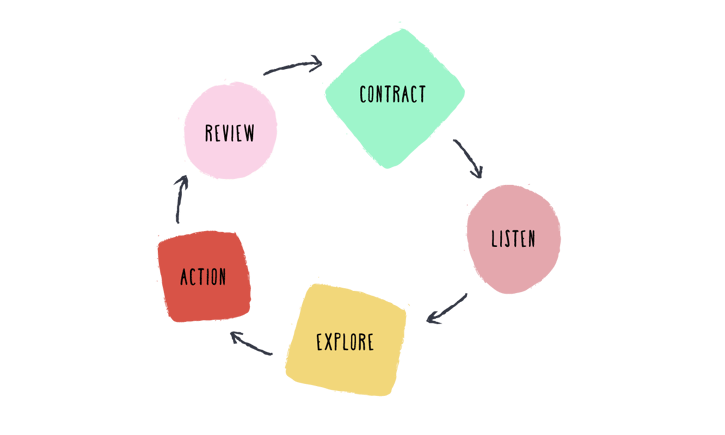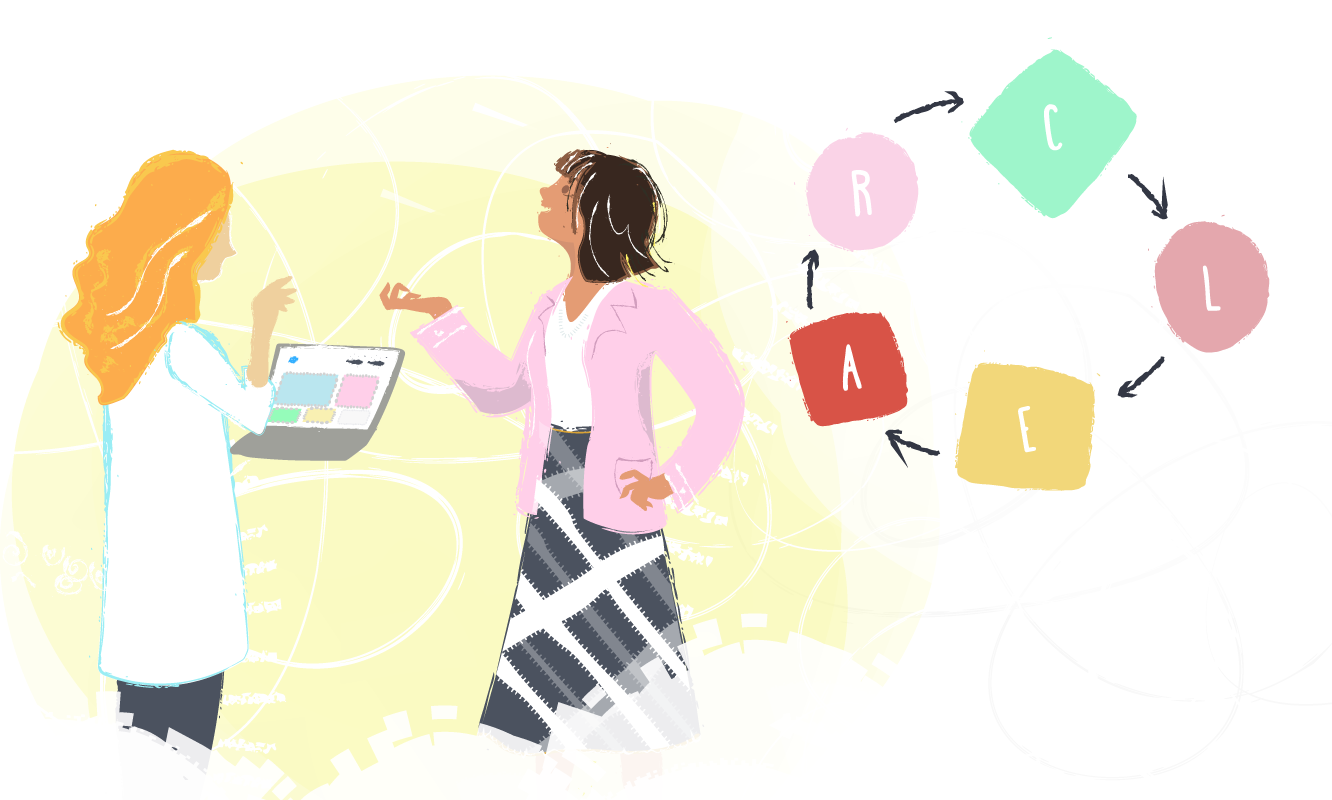Great coaching conversations take place in a container. The container is created jointly by the coach and the person doing the thinking, known as the ‘thinker’. Building the container is the contracting part of the conversation where you decide what subject to discuss, the time you have together, the outcome desired from the session, how you will know that you have achieved the outcome, the roles each will play and where to start.
The coaching process can be simple and powerful if coaches allow the thinker the space to do the work. The temptation on the part of the coach is either to offer solutions or fill silences with questions that may interfere with the thinker’s thinking. A simple process gives the freedom to allow the conversation to flow in a structured way and helps the coach not feel that the success of the session depends entirely on them. The CLEAR model was developed by Peter Hawkins in the 1980s and has been developed and used widely.

C – Contracting using the STOKeRS
L – Listen as the thinker outlines the issue
- Don’t be afraid to interrupt if that is useful. Often the thinker is giving you the known history. Replaying the story will seldom bring new insights. The coach may wish to challenge assumptions or disrupt the pattern to generate new thoughts.
- Listen to what is being said, the facts and behaviours. Equally important is what is not being said. You can listen with your eyes and see the emotions in the story – where is the passion, the fear, the hesitation? What do you notice?
- Effective listening builds trust. It does not rely on you summarising what you have heard – again that does not bring new insights. Saying what you notice might be more interesting for the thinker.
E – Explore together to broaden the thinker’s perspective and stimulate new possibilities
- Exploring begins as you listen to the themes that emerge. Picking up on themes is where the coach can add value. Check with the thinker if exploring a particular theme is what they want to do or hold it and see how it impacts on the wider discussion.
- Don’t be afraid to change the contract if the real thing that needs work is different to what you initially agreed.
- Consider moving position, going for a walk or change the medium from words to drawings or mapping out the problem.
- Great conversations require high levels of support and challenge – it is too easy to have a cosy chat. Challenge comes from the simple questions or prompts – go on, say more…
- Be cautious in using ‘why’ questions as they can be backward facing seeking an explanation. Stay in the present or future orientation and focus on the person rather than their problem. The thinker can change their behaviour, thoughts, attitudes, and actions in the coaching session. They may wish to spend the time complaining about others who are creating the problem. The coach should focus the thinker on themselves and on what needs to be done right here and now in the space created by the container.
A – Action next steps or learning points
- Actions may have arisen during the exploring phase, in which case, it may be helpful to ask if the person wants to make a note to capture the thought.
- As you begin to draw the conversation to a close it is time to draw out the insights or next steps. The thinker may not wish to share what they plan to do – as long as they know that is what matters.
- Not all conversations require actions or solutions – the thinker takes responsibility for their outcomes.
- Often the thinker does some work after the session that you will not know about.
R – Review – have we achieved the outcome?
- The final part of the process is to review the conversation checking that the thinker is where they need to be and that you have done enough for this session.
Trust the CLEAR process to do the work. Note that it is a collective effort between the coach and thinker until you come towards the end of the session. It is only then that the responsibility is taken on by the thinker. They are the ones to leave the session still thinking.
For further information on the CLEAR model please see Hawkins P., Smith, N. (2013) Coaching, Mentoring and Organizational Consultancy, Open University Press, Maidenhead.



